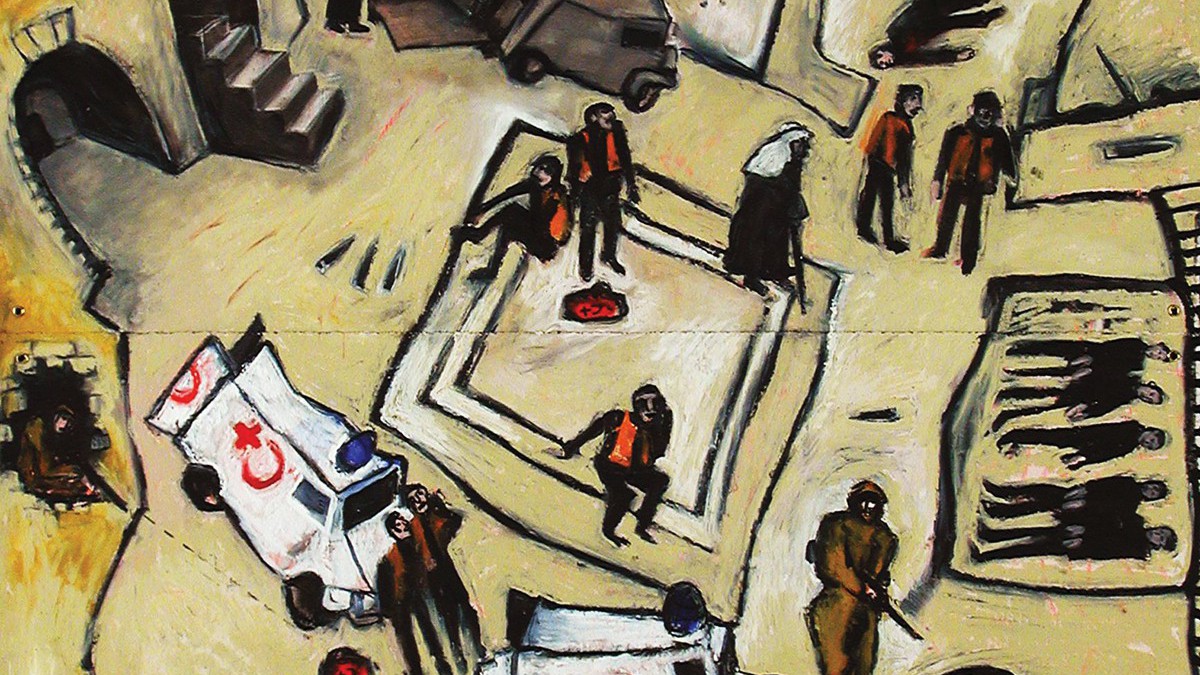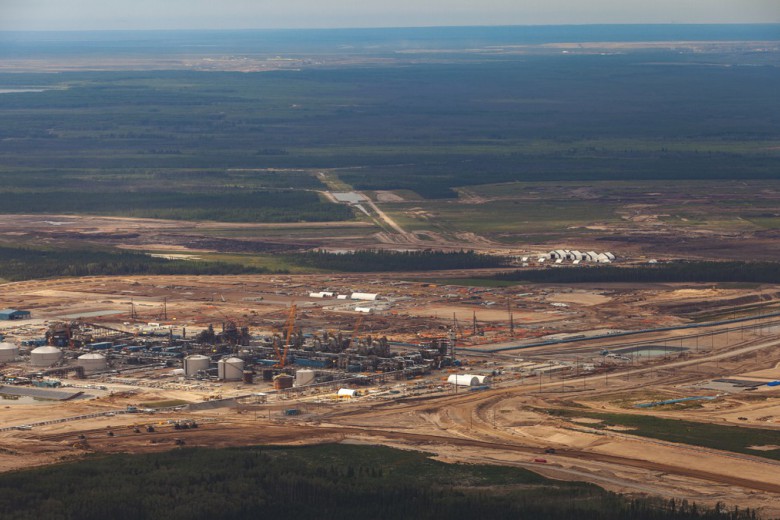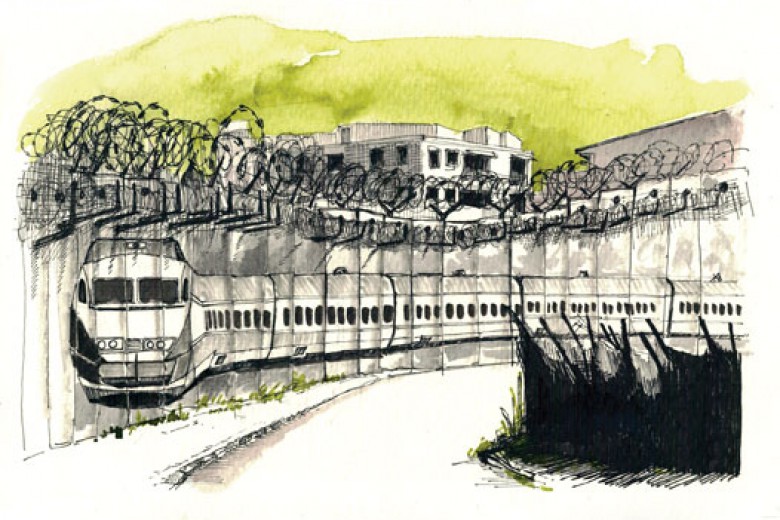In 1969, when Argentinian writer Jorge Luis Borges conducted a 10-day pilgrimage to Tel Aviv and Jerusalem, he wrote in his book, In Praise of Darkness,
“You shall be an Israeli, a soldier,
you shall build a country on wasteland.
…
One thing only we promise you –
your place in the battle.”
Where Israeli venture capitalism pursues new frontiers over the wasteland of razed Palestinian towns, a place in the battle is guaranteed even for the wide-eyed, utopian tech entrepreneur. Technological innovation is often seen as a neutral force striving for progress and social good outside of any partisan political agenda. But this erases the politics and power involved in sourcing, producing, investing, and exchanging resources between international collaborators. Israel’s high-tech market helps to normalize international relations with its apartheid settler state, rewriting territorial lines and narratives over the very ground in which the fiber-optic cables of private networks are buried.
Apolitical R&D
Fringed by a macaron boutique, a non-profit fair trade organization, and a designer baby clothing store, the office of the Canada–Israel Industrial Research and Development Foundation (CIIRDF) sits in an innocuous building in Ottawa’s gentrified neighbourhood of Westboro Village. Its headquarters in Israel are located near the border with the West Bank, 10 kilometres west of the Palestinian city of Qibya, across the Rantis checkpoint at the separation wall.
Established by the Government of Canada and the State of Israel in 1994 as a bilateral partnership, the CIIRDF brokers partnerships between private-sector high-tech companies in both countries, primarily in research and development (R&D) in fields including biotechnology, cybersecurity and surveillance, oil and gas, agriculture, and medical technology.
Israel’s high-tech market helps to normalize international relations with its apartheid settler state.
The Foundation is under the direction of the Israel Innovation Authority, an institutional branch of the Israeli state previously known as the Office of the Chief Scientist in Israel’s Ministry of Economy. The establishment of the CIIRDF anticipated the Canada–Israel Free Trade Agreement that came into effect in 1997, and which was expanded and modernized in May of 2018, pending ratification by both countries. Companies are selected to partner on research and development based on their scientific and commercial merits, the scope of competing products on the market, and their perceived benefits to Canadian and Israeli economies. Their partnership involves exchanging technology, knowledge resources, and human capital.
The CIIRDF receives what their website calls “base funding of [a] modest $1 million per year from the Government of Canada and the Government of Israel,” and contributes up to 50 per cent of joint project costs. On the back of this “modest” budget, CIIRDF has invested $50 million in bilateral R&D projects in the last 20 years that they say “have generated hundreds of millions of dollars in economic value for Canada and Israel.” Additionally, the CIIRDF managed the Canada–Israel Energy Science and Technology Fund (CIEST), which had a total operating budget of $11,718,000 between 2013 and its conclusion in 2016. Of that, $5 million came from the Canadian government through Natural Resources Canada, with “matching funds […] allocated by the Israel Innovation Authority.”
On top of pinkwashing, we are seeing the techwashing of the Israeli state.
In 2010, Israeli news site Ynet reported that the Tel Aviv tourism board launched an $88 million campaign to turn the city into “an international gay vacation destination,” sparking criticisms of Israel’s “pinkwashing” – self-consciously branding the country as LGBTQ-friendly to imply a contrast with neighbouring Arab countries, and deflect criticisms of its occupation of Palestinian lands. It’s been followed by other PR campaigns designed to soften Israel’s international image, like Project Anathot, which boasts the inclusion of disabled youth in the Israel Defense Forces (IDF). Now, with the help of the CIIRDF, Israel is styling itself as an oasis of technological innovation – on top of pinkwashing, we are seeing the techwashing of the Israeli state. Each is an effort to legitimize or distract from Israel’s human rights abuses of Palestinian people.
There are many complicated military, institutional, state, and private threads that link the CIIRDF and its partners to their support for various facets of Israel’s apartheid. However, this article is simply an introduction to the military-industrial complex that underlies Israeli R&D partnerships, encouraging readers to question the representation of the Israeli tech economy as progressive and humane.
Peaceful applications
The CIIRDF’s Information Handbook for applicants writes that “projects or technologies that may have military/non-peaceful applications are not eligible” to solicit funding. This implies that collaboration between Canadian and Israeli companies has no bearing on Israel’s militarized occupation of Palestinian land, nor any relevance to Canada’s ongoing genocide of Indigenous peoples.
The occupation and the war industry have been central to Israel’s economy since the formation of the Israeli state and concurrent establishment of the IDF in 1948. Israel’s 2019 military budget grosses 22.7 billion Canadian dollars (63 billion Israeli shekels). Israel’s mandatory military service, which requires Israeli citizens over the age of 18 to serve in the IDF, funnels conscripts into technology and engineering programs like Mamram (the IDF Center of Computing and Information Systems) and Basmach (the IDF Academy for Computer Science and Cyber Defense), Talpiot (scientific research for the IDF), and Havatzalot (Military Intelligence). CIIRDF president and co-founder Henri Rothschild, in an address to Canada’s Standing Committee on Finance last year, referred to IDF soldiers when he praised “the particular talent that emerged from the specialized training that the brightest of them received in the course of their national service.”
This implies that collaboration between Canadian and Israeli companies has no bearing on Israel’s militarized occupation of Palestinian land, nor any relevance to Canada’s ongoing genocide of Indigenous peoples.
In turn, the Israel Innovation Authority, which funds the CIIRDF and oversees numerous R&D programs within Israel and internationally, was founded in 1965 as the Office of the Chief Scientist of the Ministry of Economy. This position was first held by Brigadier General Itzhak Yaakov, one of the founders of Israel’s weapons development program. Yaakov was convicted in 2002 of divulging secrets, to his contacts and in his drafted memoirs, around Israel’s nuclear development, which, during the 1960s and the Six-Day War, ran the Negev Nuclear Research Center and is believed to have been involved in producing Israel’s nuclear weapons. Currently, the Innovation Authority is led by Aharon Aharon, a former CEO of Apple Israel and veteran of the IDF’s elite Intelligence Unit 8200, a “signals intelligence” unit that seems to be largely for hacking, decryption, and cyberwarfare. In 2014, 43 veterans and reservists of Unit 8200 wrote an open letter to Netanyahu and military chiefs, revealing the unit’s practices of collecting personal information on Palestinian civilians living under occupation that is “used for political persecution and to create divisions within Palestinian society.”
The CIIRDF’s goal is to develop technologies for the improvement of the quality of life. But whose lives are they improving? Israeli R&D companies and their Canadian collaborators that appear to work toward clean energy or life-saving medical technologies are part of an economic infrastructure that both extends the physical occupation of Palestine and normalizes the inevitability of the Israeli state.
Partners in militarized apartheid
One of the CIIRDF’s most vaunted medical partnerships is between the Ontario Brain Institute (OBI) and the non-profit Israel Brain Technologies (IBT). IBT was founded by investor Rafi Gidron, with the vision of turning Israel into a world brain-tech leader. IBT’s board of directors includes some elite IDF credentials: in particular, board director Daniel Gold is the current head of the Israel Ministry of Defense (IMOD) Directorate of Defense Research and Development, and head of Administration for the Development of Weapons and Technological Infrastructure.
The CIIRDF’s goal is to develop technologies for the improvement of the quality of life. But whose lives are they improving?
According to IBT’s website, Gold “was responsible for the State of Israel’s military research and development policy,” and “invented and managed […] Iron Dome, the mobile air-defense system that addresses the short-range rocket threats to populated areas in Israel.” The Iron Dome Weapon System is a radar-guided missile defence system using Tamir interceptor missiles, developed by Gold through Israeli military company Rafael Advanced Defense Systems (RAFAEL), and funded by the United States. Implemented in 2011, the Iron Dome was notably used in the 2012 “Pillar of Defense” airstrike operation against the Gaza Strip that killed 167 Palestinians, 87 of whom were civilians, according to Israeli NGO B’Tselem. The operation led to reports by the UN High Commissioner for Human Rights and Human Rights Watch that Israel had “failed in many instances to respect international law” by targeting civilians.
Daniel Gold’s Iron Dome system was separately brokered by the CIIRDF in 2015, in a partnership between Canadian construction and engineering firm EllisDon and RAFAEL. With a grant of $1 million through the CIEST, RAFAEL and EllisDon would develop a smart electrical grid for the city of Guelph, in southern Ontario, based on the Israeli radar and the “command and control, and situational awareness capabilities developed for the defence sector.” The development of an electricity grid in Guelph using Israeli military technology not only allows Israeli investors to “capitalize on this and other global smart grid markets,” as RAFAEL’s executive vice president, Roni Potasman, noted, but normalizes the application of technology developed by and for an apartheid state, as if the technology is rendered peaceful when applied to sustainable energy systems.
The development of an electricity grid in Guelph using Israeli military technology normalizes the application of technology developed by and for an apartheid state
Despite the CIIRDF’s own criteria that there are “no negative human rights implications associated with the project,” the Foundation will still partner with companies that supply military technologies to the Israeli police and the IDF. One notable CIIRDF partner is Elbit Systems, a private Israeli military technology company that manufactures weapons, cybersecurity and surveillance technologies, and unmanned military aircraft. Elbit is currently in the final stages of buying IMI Systems, the Israeli state-owned weapons manufacturer known for making Uzi submachine guns, for $523 million.
In March, it was announced that the CIIRDF would be partnering with Afcon Holdings, described as a “cleantech automation firm” that “establishes wind turbine farms.” This description ignores Afcon Holdings’ projects in constructing military bases and ammunition bunkers, and the fact that it provides metal detectors to the IDF to use at military checkpoints in the occupied territories and along the border with Gaza. Though the partnership was initially approved, the CIIRDF is no longer working with Afcon, and has removed the company from their website.
New frontiers of occupation
In recent years, Tel Aviv has been prophesized as “the next Silicon Valley,” even promoting Taglit–Birthright Israel tech tours that involve “hack-a-thons” at Google’s Tel Aviv campus. Tel-Aviv’s nearby suburbs like Petah Tikva, Herzliya, and Ra’anana are home to the offices of technology multinationals like Intel, Apple, and Hewlett-Packard, creating a tech hub known as “Silicon Wadi.” But many of these Silicon Wadi companies have now set their sights on the Negev Desert in south Israel. With Elbit’s purchase of IMI, for example, the weapons manufacturer intends to relocate from the tech bubble of Ramat HaSharon, outside Tel Aviv, into Ramat Beka in the Negev.
In recent years, Tel Aviv has been prophesized as “the next Silicon Valley.”
Israel’s existing kibbutzim (collective settlements) in the Sha’ar HaNegev region of the Negev, on the border with Gaza, are home to organizations like SouthUp, which aim to attract high-tech companies to their communities. They partnered with Hamashtela Foundation to create a tech kibbutz fund to help “agriculture tech, water tech, kibbutz industrial development, energy, chemistry, biology, and software” companies establish themselves in local kibbutzim. The Israeli state’s vision is to construct 11 new towns in the Negev and double the region’s population by 2035, “in part for career IDF officers who would move south along with key army facilities.”
The Negev is the ancestral home of the traditionally nomadic Bedouin. Since the establishment of the Israeli state, the Bedouin have been subject to eviction and land expropriation. Their villages have been bulldozed in the West Bank’s Israeli-controlled Area C and resettled into closed military zones. In a move that evokes Canada’s reserve system for First Nations, the Israeli government has begun “legalizing” previously illegal Negev Bedouin homes while denying recognition of the Bedouin people’s claims to ownership of the land, and establishing Bedouin towns that are subject to Israeli legislation and authority. This move ultimately strips the traditionally nomadic Bedouin of rights to the land and autonomy from the state of Israel.
Many of these Silicon Wadi companies have now set their sights on the Negev Desert in south Israel.
In establishing tech-oriented settlements in the Negev, the Israeli state draws on a mythology of technological “pioneering” and industrialist “innovation” to invoke nationalist sentiment. There is a terrible irony in developing so-called “peaceful technologies” out of the militarized mechanisms of a state that, so far in 2018, has killed over 100 Palestinians and injured thousands more, continues to displace Bedouin in the Negev, and continues to encroach on Syria.
Where human dignity and the very right to exist are assaulted by the Israeli state, Canada must be held accountable for its complicity. It is not enough to condemn only the most obvious forms of violence for which Israel is responsible; it is equally important to challenge and resist pernicious forms of violence that cloak themselves in words of “peace” and “sustainability.” What is defined as a peaceful application of technology, when all applications normalize the foundational violence of the Israeli apartheid state? Where there is illegal settlement, there is no peace.







